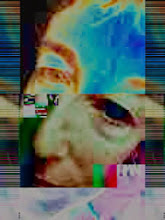
Structuralism is a theoretical project that analyzes, not hidden meanings, but the systematic rules which govern the social formation & are encoded into social artifacts. As a structuralist, for example, Roland Barthes analyzed a wide variety of texts in Mythologies: the world of wrestling, the face of Garbo, neither-nor criticism, and so forth. [I have tried to emulate Barthes in the previous entry.] As Barthes explains, "[m]ythical speech is made of a material which has already been worked on so as to make it suitable for communication....myth in fact belongs to the province of general science, coextensive with linguistics, which is semiology." Semiology: the science of signs.
To be more specific myth refers to an unacknowledged series of concepts through which a culture comes to understand itself. It helps naturalize all aspects of culture: political, economic, social, etc.
However, have structuralism and semiotics/myth as concepts been written out of critical theory? In New Keywords: a revised vocabulary of culture and society structuralism, semiotics and myth don't appear.
Has the power of structuralism as a theoretical perspective withered, or have intellectuals in their desire to be up-to-date, dug it up only to discard it in favor of post-structuralism and/or postmodernism? I think the answer to this question is "yes," and I would argue that it's a loss for understanding the relationships between the exercise of power and the dominant ideology of a given social formation.
For a bibliographic essay on structuralism with many links to relevant online sources click here. And for another great web resource see this semiotics site which I found cited on Sobhan Rezaee's Culture and Communication blog.



